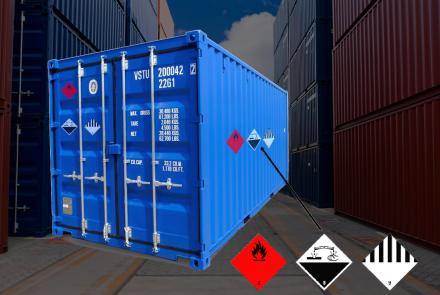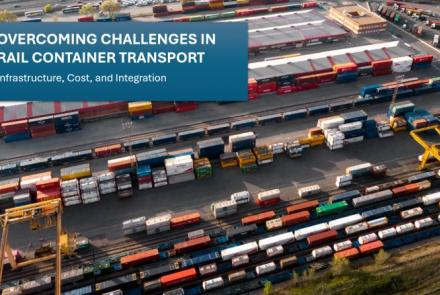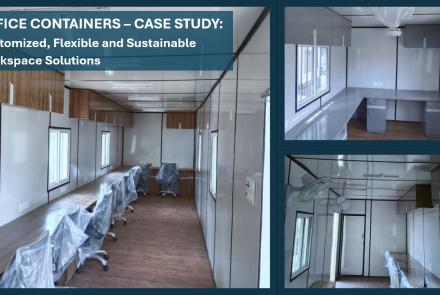The 2 D’s of Shipping

Container shipping is the mainstay of modern trade and commerce. It transports 95% of all manufactured goods around the globe.
In addition to the complex navigation of ships over vast oceans to reach distant destinations, there are also other intricate activities working in the background to ensure a safe, timely pick-up & delivery of goods. These processes, when they work in harmony result in the optimum utilization of all resources that are an integral part of the freight & forwarding industry.
Containers are owned or leased by shipping lines who provide them to the shippers or merchants, for door-to-door transportation of their merchandise. Freight charges also include the cost of door-to-door transportation. Therefore it becomes vital for the shipping lines to ensure a quick turnaround of their containers. For using the containers beyond the allocated free time that a merchant has at his disposal, a fee known as “demurrage and detention charge” is levied.
What do the terms “Demurrage & Detention charge” mean, and how do they apply”?
Demurrage:
When a merchant is obliged to pay costs for holding a container left inside the premises of a terminal beyond the originally allotted free time period, it is known as “demurrage”. Shipping Lines are duty-bound to allocate a reasonable time during which a container must be picked up and removed from the terminal. Avoiding demurrage charges naturally act as motivation for the shipper and helps to free up as quickly as possible the limited storage space inside a terminal. So as we can infer, demurrage charges specifically apply to containers left inside the premises of a terminal beyond the free time allotted. For conventional shipping, the free time varies from 3 to 5 days after a container is discharged from a shipping vessel. In most instances, demurrage charges have to be settled before the container is picked up from the terminal.
Detention charges:
Detention charges signify a different meaning and are applied in another context which we will explain here. After picking a container, a pre-determined free time is allocated to the shipper for unloading the cargo and returning the empty container back to the terminal. If there is a delay in returning the container beyond this allocated free time, “detention charges” are applied.
The scenarios illustrated above apply equally to import and export. An example where demurrage charges could apply during the export process is when a loaded container is unable to claim a berth in the scheduled vessel because of errors in documentation or other non-carrier related issues where the freight-forwarding company is primarily at fault. In such a scenario, the container is held at the terminal till the next vessel departs, necessitating the payment of demurrage charges for the period of detention.
Likewise, detention charges may also apply while exporting cargo. This happens when an empty container is picked by a shipper from the yard for loading but not returned to the port within the allocated free time. Shipping lines normally allow 5 days to pick the container, load and return it to the port. Any extra time taken to complete this process qualifies for a detention charge.
Poor planning and unforeseen circumstances like congestion in ports are some of the reasons that contribute to the imposition of demurrage and detention charges. But several of these issues can be overcome by being meticulous while preparing documents and practicing timeliness in activities related to documentation, loading, unloading and movement of containers from the terminal to the premises of the consignee and vice versa.
Demurrage and Detention charges levied on a shipper need not necessarily be the final verdict. A shipper can always negotiate or even request additional free days before such charges are applied. Good public relations exercises save a lot of trouble and unnecessary expenditures.
In this background, we can delve into the world of SOC – Shipper-owned Container which is an attractive option for shippers to consider and avert costly demurrage and detention charges. Here, the shipper rents a container from its owner, uses it for one-way shipment and then returns it to the owner’s depot near the port of destination itself. This involves almost free usage of the container after it is discharged from a vessel until it is emptied and returned to the owner’s local depot. The container owner enjoys a dual benefit from this arrangement. It enables a quick turnaround of the container together with the added advantage of repositioning it at the anticipated port for its next journey.
International Federation of Freight Forwarders Associations (FIATA) is a non-governmental organization that works to represent, promote and protect the interests of the international logistics and freight forwarding industry.
To alleviate the current situation of expensive demurrage and detention charges, FIATA recommends some best practice guidelines to help reduce avoidable supply chain expenditures like demurrage and detention charges. This is especially relevant in the background of the fact that delays often occur for no fault of the freight forwarder or shipper. Some of the best practice recommendations are:
* Cap the demurrage or detention charge accumulated to a certain amount.
* Stretch the free time period when terminals are not in a position to release or accept a container by a period that matches the length of the inability.
* Support the change towards a means of transport that is more environmentally friendly by increasing the detention free period.
* Alter the export demurrage mechanisms to shift the responsibility of vessel delays to the shipping line.
* Demurrage and detention charges on import shipments must be applied fast, not extending beyond 7 days.
- Log in to post comments






